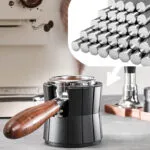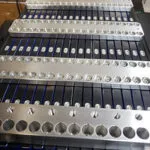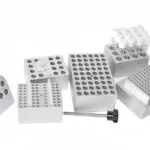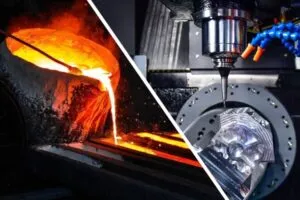In the field of CNC machining, tools are key components that directly act on the workpiece and achieve material removal. Whether they are properly selected and the optimization strategy during use has a profound impact on processing efficiency, product quality and production costs.
1. Selection of tool materials
The performance of tool materials directly determines the cutting performance and service life of the tool, as well as the processing efficiency of the machine tool and the processing quality of parts. Common tool materials include high-speed steel, cemented carbide, ceramics and superhard materials (such as diamond and cubic boron nitride).
High-speed steel: It has high strength and toughness, good processability, can withstand large cutting forces and impact loads, and is suitable for manufacturing tools with complex structures, such as drills, taps, milling cutters, etc. However, its heat resistance is poor. When cutting at high speed, the tool wears faster. It is mainly used for low-speed cutting and occasions where precision requirements are not too high.
Cemented carbide: It is made of carbides with high hardness and melting point (such as tungsten carbide and titanium carbide) and metal binders (such as cobalt and nickel) through powder metallurgy. It has the advantages of high hardness, good wear resistance, and strong heat resistance. The allowed cutting speed is much higher than that of high-speed steel, and it is widely used in CNC machining. According to the different components and properties, cemented carbide can be divided into tungsten-cobalt type (YG), tungsten-titanium-cobalt type (YT) and general cemented carbide (YW). YG cemented carbide is suitable for processing cast iron, non-ferrous metals and their alloys; YT type is suitable for processing steel; YW type has the advantages of both YG and YT types and can be used to process various difficult-to-process materials.
Ceramic tools: With alumina (Al2O3) or silicon nitride (Si3N4) as the main components, it has the characteristics of high hardness, high wear resistance, high heat resistance and chemical stability. The cutting speed of ceramic tools is higher than that of cemented carbide tools. It can maintain good cutting performance under high-speed cutting. It is suitable for high-speed finishing and processing of materials with higher hardness. However, ceramic tools are more brittle and have weak impact resistance. When using them, you need to pay attention to the selection of cutting parameters and the stability of the cutting process.
Superhard materials: Diamond tools have extremely high hardness and wear resistance, sharp cutting edges, and can achieve high-precision processing. They are mainly used for processing non-ferrous metals, non-metallic materials, and ultra-precision processing. The hardness of cubic boron nitride (CBN) tools is second only to diamond. They have good thermal stability and chemical stability. They can still maintain high hardness and wear resistance at high temperatures. They are suitable for processing high-hardness ferrous metals and difficult-to-process materials, such as hardened steel, chilled cast iron, etc.
2. Tool optimization strategy
Tool path optimization:
A reasonable tool path can reduce the idle travel time of the tool, improve machining efficiency, and avoid interference and collision between the tool and the workpiece to ensure machining quality. When programming CNC, the appropriate tool path strategy should be selected according to the shape, size and machining requirements of the workpiece, such as circular cutting, line cutting, spiral milling, etc. For example, when machining complex cavities, the use of spiral milling tool paths can make the tool cutting more stable, reduce tool wear and machining time.
Cutting parameter optimization:
Cutting parameters include cutting speed, feed rate and cutting depth, which directly affect tool wear, machining efficiency and machining quality. Through experiments and data analysis, a reasonable combination of cutting parameters can be determined to improve machining efficiency, reduce tool wear and production costs while ensuring machining quality. When optimizing cutting parameters, factors such as the properties of the workpiece material, the performance of the tool material, the geometric parameters of the tool, and the performance of the machine tool should be considered. For example, for workpiece materials with higher hardness, the cutting speed should be appropriately reduced, and the feed rate and cutting depth should be increased; for high-speed steel tools, the cutting speed should not be too high; for CNC machine tools, their high speed and high precision characteristics should be fully utilized to reasonably select cutting parameters.
Tool monitoring and management:
Establish a tool monitoring system to monitor the wear and breakage of the tool in real time, replace the tool in time, and avoid processing quality problems and production accidents caused by tool wear or breakage. At the same time, strengthen the management of tools, standardize the procurement, inventory, use and scrapping of tools, improve the utilization rate of tools, and reduce tool costs. For example, adopt a tool life management system, reasonably set the service life of the tool according to the actual use and wear law of the tool, and replace the tool in time before the tool reaches its service life to ensure the continuity and stability of processing.
Application of tool coating technology:
Tool coating is to coat one or more layers of thin films with special properties on the surface of the tool, such as TiN, TiC, TiAlN, etc., to improve the hardness, wear resistance, heat resistance and chemical stability of the tool. Tool coating can significantly improve the cutting performance and service life of the tool, reduce cutting force and cutting temperature, and improve the surface quality of the machined surface. When selecting tool coating, it should be determined according to the properties of the workpiece material, the processing requirements, and the type and use conditions of the tool. For example, for processing steel, TiN coated tools have better wear resistance and anti-adhesion; for processing high-temperature alloys, TiAlN coated tools have better heat resistance and oxidation resistance.
Tool selection and optimization are crucial links in CNC machining. By reasonably selecting tool materials, optimizing tool geometric parameters and adopting effective tool optimization strategies, it is possible to improve processing efficiency, ensure processing quality, reduce production costs, and thus enhance the competitiveness of enterprises in the market. In actual production, various factors should be comprehensively considered according to specific processing requirements and conditions, and continuous exploration and practice should be carried out to achieve the best selection and optimal use of tools.

















